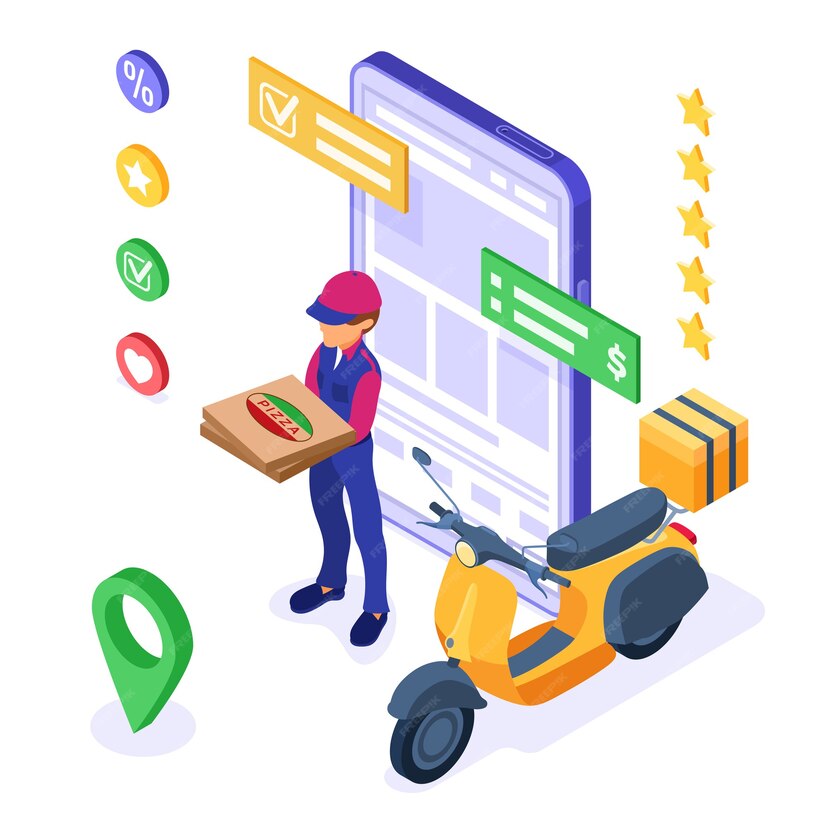
How to Develop a Delivery App?
Delivery applications have become a necessary part of our everyday lives in the fast-paced world of today, providing speed and convenience for anything from groceries to meals to services. To make sure your delivery app stands out in a crowded industry, you must take a methodical approach to develop a delivery app. This is a thorough tutorial on creating a delivery app.
1. Identify Your Niche
Before diving into development, it’s essential to identify your niche. The delivery app market is vast, covering various segments such as:
- Food Delivery: Apps like Uber Eats and Grubhub.
- Grocery Delivery: Apps like Instacart and Shipt.
- Parcel Delivery: Apps like Postmates and DoorDash.
- Service Delivery: Apps like TaskRabbit and Handy.
Choose a niche based on market demand, competition, and your unique strengths.
2. Conduct Market Research
By conducting in-depth market research, you can better understand your target market and rivals. This will enable you to differentiate your software from the competition and customize it to match customer needs. Important aspects of the study consist of:
- User Demographics: Age, gender, location, income level.
- User Preferences: What features do they value most in a delivery app?
- Competitor Analysis: Strengths and weaknesses of existing delivery apps.
3. Define Core Features
Identify the core features your app will offer. Essential features for a delivery app include:
- User Registration and Profile Management: Easy sign-up and profile management options.
- Search and Browse: Efficient search functionality for users to find what they need.
- Order Placement: Simple and intuitive order placement process.
- Payment Integration: Secure and diverse payment options (credit/debit cards, digital wallets).
- Real-Time Tracking: Real-time tracking of orders.
- Notifications: Order status updates via push notifications, SMS, or email.
- Ratings and Reviews: Allow users to rate and review their delivery experience.
- Customer Support: 24/7 customer support for queries and issues.
4. Choose the Right Technology Stack
Select a technology stack that ensures your app is scalable, secure, and user-friendly. Common choices include:
- Front-End Development: React Native or Flutter for cross-platform app development.
- Back-End Development: Node.js, Ruby on Rails, or Django for server-side development.
- Database: PostgreSQL, MongoDB, or MySQL for data storage.
- Payment Gateway Integration: Stripe, PayPal, or Braintree.
- Real-Time Notifications: Firebase Cloud Messaging or Twilio.
5. Design the User Interface (UI) and User Experience (UX)
A user-friendly interface and seamless user experience are critical for the success of your app. Focus on:
- Simplicity: Keep the design clean and intuitive.
- Consistency: Ensure a consistent look and feel across the app.
- Accessibility: Make your app accessible to all users, including those with disabilities.
- User Testing: Conduct user testing to gather feedback and make necessary improvements.
6. Develop the App
With the groundwork laid, proceed with the development phase. This involves:
- Front-End Development: Building the user-facing part of the app.
- Back-End Development: Setting up the server, database, and APIs.
- Integration: Integrating payment gateways, real-time tracking, and notification systems.
- Testing: Conduct rigorous testing to identify and fix bugs.
7. Launch and Market Your App
Once development and testing are complete, prepare for the launch. Key steps include:
- Pre-Launch Marketing: Build anticipation through social media, email campaigns, and influencer partnerships.
- Launch: Release your app on app stores (Google Play and Apple App Store).
- Post-Launch Marketing: Continue marketing efforts to attract and retain users. Use SEO, social media marketing, and paid advertising.
8. Monitor and Improve
After launching your app, continuously monitor its performance and user feedback. Key metrics to track include:
- User Acquisition: Number of downloads and sign-ups.
- User Retention: How often users return to your app.
- Order Volume: Number and frequency of orders.
- Customer Satisfaction: Feedback and reviews from users.
Conclusion
The process of creating a delivery app is complex and need for careful planning, in-depth investigation, and ongoing development. You may develop a successful delivery app that stands out in the market and satisfies the needs of modern users by adhering to these guidelines and keeping the needs of the user in mind. This book will assist you in navigating the development process and achieving your objectives, whether your aim is to deliver groceries, food, packages, or services.




Leave Your Comment